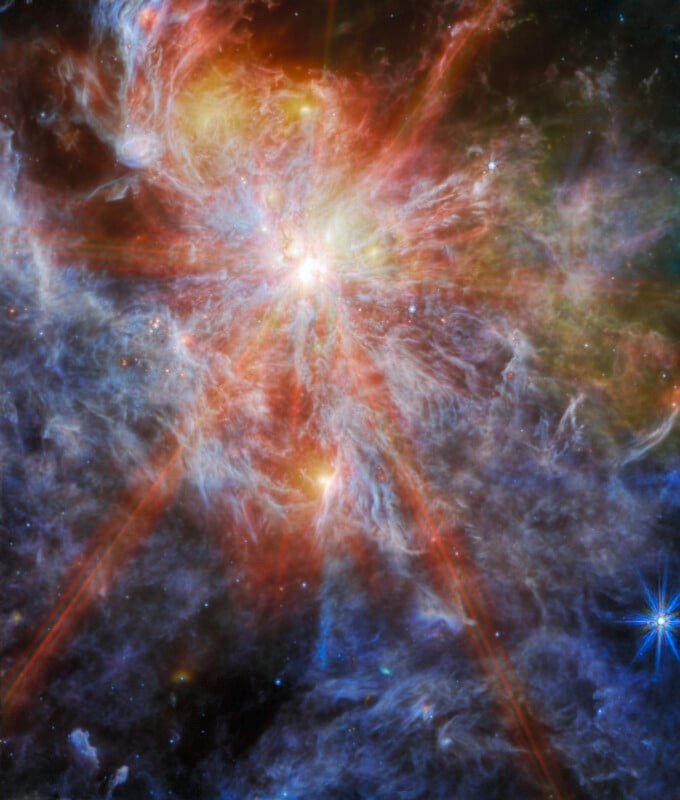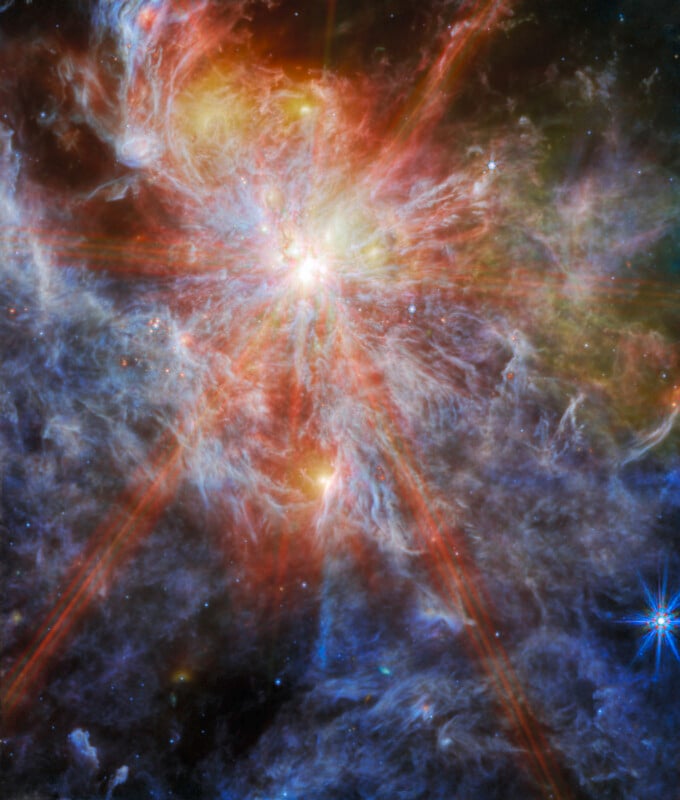

The James Webb Space Telescope set its sights on a region of ionized interstellar atomic hydrogen in the Large Magellanic Cloud (LMC) this week, delivering one of Webb’s most colorful photos yet.
Using the Mid-InfraRed Instrument (MIRI), scientists peered through the cosmic gas and dust of nebula N79, a massive star-forming complex that is about 1,630 light-years wide within a scarcely-explored region of the LMC.
“N79 is typically regarded as a younger version of 30 Doradus (also known as the Tarantula Nebula), another of Webb’s recent targets. Research suggests that N79 has a star formation efficiency exceeding that of 30 Doradus by a factor of two over the past 500,000 years,” the European Space Agency (ESA) explains.
MIRI’s nebula portrait looks at one of N79’s three giant molecular cloud complexes. In this case, it’s N79 South (S1). The large beams of light from the brightest area in the top third of the image are diffraction spikes.
“All telescopes which use a mirror to collect light, as Webb does, have this form of artifact which arises from the design of the telescope. In Webb’s case, the six largest starburst spikes appear because of the hexagonal symmetry of Webb’s 18 primary mirror segments,” says ESA.
These diffraction spikes, or starbursts, are only visible when observing extremely bright, small objects. Many galaxies, even if they seem very compact and luminous from Earth, are so spread out and dark that they don’t produce diffraction spikes.
Star-forming regions like N79 are important to astronomers because their chemical composition is similar to the giant star-forming regions that existed when the Universe was still very young, only a few billion years old. During this era, star formation was at its height. Star formation is much slower in the Milky Way Galaxy than in N79, allowing scientists a chance to study a relatively nearby area that simulates the early Universe closely. Researchers can compare and contrast regions like N79 with Webb’s observations of very distant, ancient galaxies.
Image credits: ESA/Webb, NASA & CSA, O. Nayak, M. Meixner






